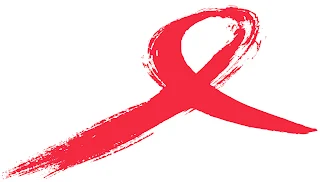ഇന്ന് ലോക രക്തദാന ദിനം.
'ഹൃദയത്തില് നിന്ന് സ്നേഹം സിരകളില് നിന്ന് രക്തം...
ഒരു മനുഷ്യന് മറ്റൊരാള്ക്ക് ഇതില്പരമെന്തു നല്കാനാവും...'
രക്ത ബന്ധത്തേക്കാള് ഉപരിയായി വേറെ ഒന്നും ഇല്ല . ഇതിനെക്കാള് വലുതായി മറ്റൊരു ദാനവും ഇല്ല . നിങ്ങള് ദാനം ചെയ്യുന്ന രക്തം ഒരു വ്യക്തിയുടെ ജീവന് രക്ഷിക്കുന്നു എങ്കില് ഒരു പക്ഷെ നിങ്ങളുടെ ജീവിതത്തിലെ ഏറ്റവും വിലപ്പെട്ട സേവനം ആയിരിക്കും . രക്ത ദാനം ദാതാവിന് ഒരു കോട്ടവും വരുത്തുന്നില്ല നേട്ടങ്ങള് അല്ലാതെ .
ആരോഗ്യമുള്ള 18 നും 50 നും മദ്ധ്യേ പ്രായമുള്ള ആര്ക്കും രക്തം ദാനം ചെയ്യാവുന്നതാണ് സ്വമേധയാ രക്തദാനത്തിനായി എല്ലാവരെയും സന്നദ്ധരാക്കുക എന്നതാണ് ഈ ദിനാചരണത്തിന്റെ ലക്ഷ്യം. രക്തം അമൂല്യമാണ്. മനുഷ്യരക്തത്തിനു പകരമായി ഒന്നും ഇതുവരെ വൈദ്യശാസ്ത്രം കണ്ടെത്തിയിട്ടില്ല. പ്രായപൂര്ത്തിയായ ഒരാളിന്റെ ശരീരത്തില് ശരാശരി 5 ലിറ്റര് രക്തം ഉണ്ടാകും. ആരോഗ്യമുള്ള ഏതൊരാള്ക്കും മൂന്നു മാസത്തിലൊരിക്കല് രക്തം ദാനം ചെയ്യാവുന്നതാണ്. സാധാരണ 350 മില്ലി ലിറ്റര് രക്തമാണ് ശേഖരിക്കുന്നത്. രക്തം ദാനം ചെയ്താല് ചുരുങ്ങിയ സമയത്തിനുള്ളില് അത്രയും രക്തം പുതുതായി ശരീരം ഉല്പ്പാദിപ്പിക്കും.
രക്തദാനം ശീലമാക്കു... ഈ ജന്മം അമൂല്യമാക്കൂ...
'ഹൃദയത്തില് നിന്ന് സ്നേഹം സിരകളില് നിന്ന് രക്തം...
ഒരു മനുഷ്യന് മറ്റൊരാള്ക്ക് ഇതില്പരമെന്തു നല്കാനാവും...'
രക്ത ബന്ധത്തേക്കാള് ഉപരിയായി വേറെ ഒന്നും ഇല്ല . ഇതിനെക്കാള് വലുതായി മറ്റൊരു ദാനവും ഇല്ല . നിങ്ങള് ദാനം ചെയ്യുന്ന രക്തം ഒരു വ്യക്തിയുടെ ജീവന് രക്ഷിക്കുന്നു എങ്കില് ഒരു പക്ഷെ നിങ്ങളുടെ ജീവിതത്തിലെ ഏറ്റവും വിലപ്പെട്ട സേവനം ആയിരിക്കും . രക്ത ദാനം ദാതാവിന് ഒരു കോട്ടവും വരുത്തുന്നില്ല നേട്ടങ്ങള് അല്ലാതെ .
ആരോഗ്യമുള്ള 18 നും 50 നും മദ്ധ്യേ പ്രായമുള്ള ആര്ക്കും രക്തം ദാനം ചെയ്യാവുന്നതാണ് സ്വമേധയാ രക്തദാനത്തിനായി എല്ലാവരെയും സന്നദ്ധരാക്കുക എന്നതാണ് ഈ ദിനാചരണത്തിന്റെ ലക്ഷ്യം. രക്തം അമൂല്യമാണ്. മനുഷ്യരക്തത്തിനു പകരമായി ഒന്നും ഇതുവരെ വൈദ്യശാസ്ത്രം കണ്ടെത്തിയിട്ടില്ല. പ്രായപൂര്ത്തിയായ ഒരാളിന്റെ ശരീരത്തില് ശരാശരി 5 ലിറ്റര് രക്തം ഉണ്ടാകും. ആരോഗ്യമുള്ള ഏതൊരാള്ക്കും മൂന്നു മാസത്തിലൊരിക്കല് രക്തം ദാനം ചെയ്യാവുന്നതാണ്. സാധാരണ 350 മില്ലി ലിറ്റര് രക്തമാണ് ശേഖരിക്കുന്നത്. രക്തം ദാനം ചെയ്താല് ചുരുങ്ങിയ സമയത്തിനുള്ളില് അത്രയും രക്തം പുതുതായി ശരീരം ഉല്പ്പാദിപ്പിക്കും.
രക്തദാനം ശീലമാക്കു... ഈ ജന്മം അമൂല്യമാക്കൂ...
World Blood Donor Day 2012
On 14 June, countries worldwide celebrate World Blood Donor Day with events to raise awareness of the need for safe blood and blood products and to thank voluntary unpaid blood donors for their life-saving gifts of blood.
The theme of the 2012 World Blood Donor Day campaign, “Every blood donor is a hero” focuses on the idea that every one of us can become a hero by giving blood. While recognizing the silent and unsung heroes who save lives every day through their blood donations, the theme also strongly encourages more people all over the world to donate blood voluntarily and regularly.
World Blood Donor Day 2012 - Every blood donor is a hero
On 14 June, countries worldwide celebrate World Blood Donor Day with events to raise awareness of the need for safe blood and blood products and to thank voluntary unpaid blood donors for their life-saving gifts of blood. The theme of the 2012 World Blood Donor Day campaign, “Every blood donor is a hero” focuses on the idea that every one of us can become a hero by giving blood. While recognizing the silent and unsung heroes who save lives every day through their blood donations, the theme also strongly encourages more people all over the world to donate blood voluntarily and regularly.The journey of blood: from one life to another
June 2012Voluntary blood donors are the safest source of blood, compared to people who donate for family members in emergencies or who give blood for payment. WHO is advocating that all countries move to a system of regular voluntary blood donation to meet their needs. It is essential that every nation has a stable pool of healthy donors who donate blood regularly.
The journey from the time blood is donated to when it is transfused is a complex one as it needs to be tested, stored and transported prior to use. Transfusion services face the challenge of providing blood that is safe and adequate to meet the rising demand.
10 facts on blood transfusion
February 2012Around 92 million units of blood donations are collected globally every year. Nearly 50% of these blood donations are collected in high-income countries, home to 15% of the world’s population.
An adequate and reliable supply of safe blood can be assured by a stable base of regular, voluntary, unpaid blood donors. Regular, voluntary, unpaid blood donors are also the safest group of donors as the prevalence of bloodborne infections is lowest among these donors.



























